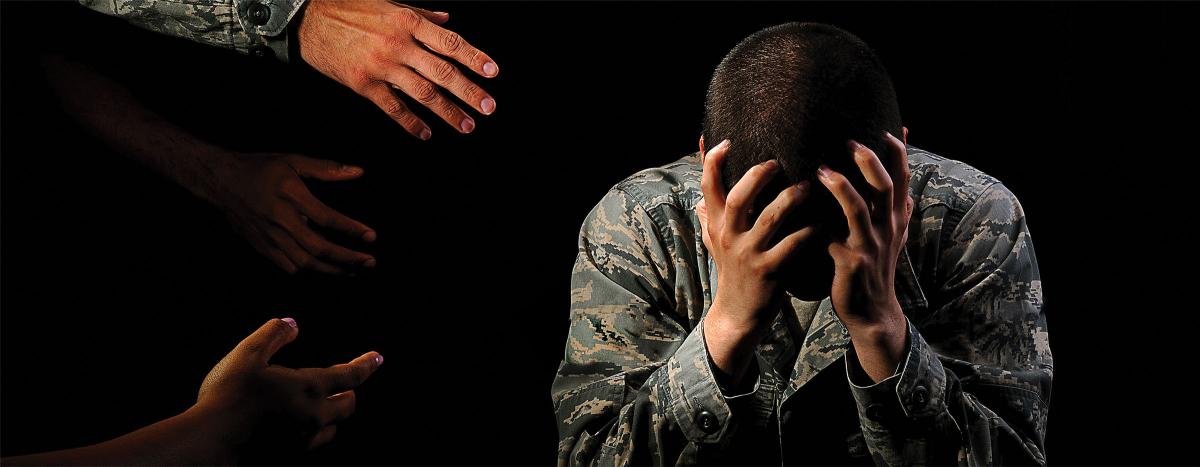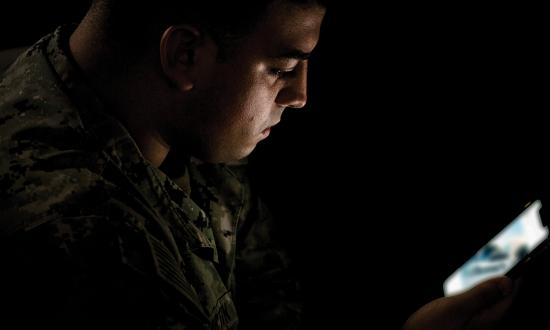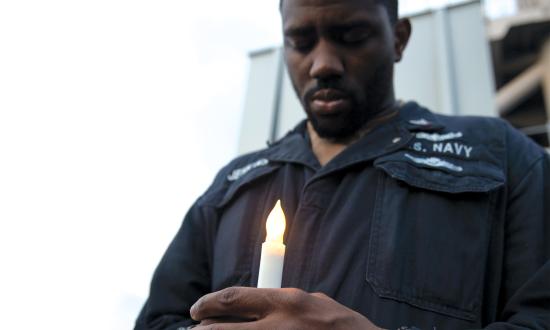In 2001, the commanding officer of the USS Kitty Hawk (CV-63) was relieved of command for a decline in readiness requirements and inspection failures.1 The Navy has a history of removing such commanders, including those not completing daily safety checks and failing to meet standards.2 Even without a detailed knowledge of Navy preventive maintenance, the average sailor can understand removing leaders who disregard the condition of their ships or aircraft. But what about those who disregard the mental health of their crews?
Navy policy defines preventive maintenance as “actions intended to prevent or discover functional failures.”3 The idea is to take care of machinery, parts, and tools proactively. For an engine, that means cleaning it, changing out lube, and periodically checking for wear and tear. Disregarding upkeep can have catastrophic consequences that could require corrective maintenance, or “actions performed as a result of failure to return or restore equipment to acceptable performance levels.”
Enter Mental Health
In 1998, the Navy introduced psychologists as part of the fleet in the “Psychology at Sea” program.4 The service had good intentions. Suicide is costly in many ways beyond the tragic loss of a sailor, including a decrease in unit efficiency and cohesion and the grief of shipmates. Adding Navy psychologists to the carrier strike group was to help prevent these disastrous events.
Unfortunately, this has not always been the case. One Navy psychologist described her job as being “the command’s release valve.” Instead of fine-tuning a sailor’s mental well-being, she has found herself attempting to put the parts back together after a figurative, or literal, breakdown. Often, by the
time a sailor reaches her office, the damage is so severe that she has no choice but to recommend administrative separation because of the high risk for suicide.
Navy leaders have ignored the warning signs. To put it simply, they fail at preventive maintenance. The Command Resilience Team Human Factors Council is the most recent attempt. The training video is filled with buzzwords, flow charts, Excel sheets, and sleek images to encourage leaders to sit down with sailors to learn about problems in their lives that might be negatively affecting their performance.5 On the surface, it appears to be a way to intervene in the early stages of destructive behavior. The wheels fall off when you realize there is no plan after problems are identified.
Khaki leaders can learn through conversation that a sailor is having marital problems, depression, or financial issues. The solution, however, remains the same. The sailor is dumped off at the chaplain or the nearest mental health provider, if the issue is severe enough. Once the sailor is disposed of, the cycle continues.
Real change is needed. If the Navy stays on its current path, sailors will continue using destructive behavior as a coping mechanism for their depression, anxiety, and anger.
Solutions with Positive Impact
Several possible solutions could have a positive impact on sailors’ mental well-being:
Hire more social workers. If Navy psychologists are the mechanics that repair broken equipment, social workers are the technicians that do inspections, routine checks, and early corrections to keep the machine running smoothly. Currently, sailors seeking mental health help can expect to wait weeks, if not months, for an appointment if they are not an immediate threat to themselves. An increase in available social workers could cut that wait time to provide real-time help. When it comes to mental health, a non-life-threatening situation could deteriorate quickly if not addressed.
Regularly available therapy could benefit everyone, even those who do
not normally struggle with mental health issues. Social workers could help sailors develop positive coping mechanisms for the routine stressors at home and on deployment and foster healthy relationships between chains of command and families.
Reduce sailor workload. The load each sailor carries has increased dramatically since the days current leaders joined the Navy. Mandatory training, collateral duties, required career paths, and countless other responsibilities that disproportionately affect junior enlisted and officers are regularly mentioned in command climate surveys as being more bothersome than deployments.
Deployments themselves have increased in length and frequency. Numerous articles in Proceedings have examined the impact of extended deployments on the material condition of ships, aircraft, and the lives of sailors.6
End the stigma. This idea has been circulated for years but with little impact. No one gets to choose their anxieties, so why are sailors treated as if it was their decision? Why is it assumed that underperforming sailors are faking it when they report to medical? Why does the Navy insist on keeping sailors in ratings they are unhappy with or are not suited for, especially if they are in high demand? Why does the Navy immediately involve command legal teams when a sailor is on unauthorized absence instead of seeking to understand?
We need to shift colors and leave these toxic beliefs at the pier.
I asked a group of naval aviators, flight officers, and aircrewmen if they would feel comfortable seeking mental health resources. To no one’s surprise, they all said no. Fear of losing flight status, security clearances, or their command’s confidence were the main driving factors. Until the Navy makes it acceptable, those who could use even minor help will suffer silently.
Operational risk management (ORM). ORM already exists, but naval aviation has another tool that would be beneficial to the rest of the fleet. IM SAFE—an acronym for illness, medication, stress, alcohol, fatigue, and eating—requires all aircrew to acknowledge they are in compliance and safe to fly.7 This could be applied to all naval communities and could prevent repeats of the 2017 collisions at sea as well as deaths by suicide. Letting sailors opt out of dangerous evolutions for issues of mental well-being would be beneficial to all parties. Instead, they are counseled for trying to avoid work.
From 2014 through 2020, there were 3,538 suicides among active-duty, reservist, and National Guard service members across all branches.8 If veteran deaths are included, suicides since 9/11 are in excess of 114,000.9 This is more service members than were lost during the same time period fighting the enemy: Officially, 101, 2,218, and 4,418 military members were killed in Operation Inherent Resolve, Enduring Freedom, and Iraqi Freedom, respectively.10
The Navy is facing a new war. It is a war for mental health—and it is losing. It needs a unified vision, a goal, and the will to fight. Sailors are owed the same respect as the machinery they operate. It is time to schedule routine care.
Author’s Note: If you or someone you know is struggling with suicide, please visit https://suicidepreventionlifeline.org or call 1-800-273-8255 to speak with a Veteran Crisis Line professional.
1. Thomas E. Ricks, “Navy Relieves a Carrier Commander,” The Washington Post, 4 September 2002.
2. Associated Press, “Nuclear Sub Commander Relieved of Duty,” NBCnews.com, 25 October 2007; and Nancy Montgomery, “USS Gary Captain Was Relieved Because Ship Failed to Meet Standards,” Stars and Stripes, 17 December 2003.
3. OpNavInst 4700.7M, Navy Maintenance Policy for Ships (Washington, DC: Department of the Navy, 8 May 2019).
4. John Thomas, “Psychologists Are Now Assigned to 12 Navy Aircraft Carrier Battle Groups,” The National Psychologist, 1 January 2002.
5. Command Resilience Team Human Factors Council Training.
6. See, for example, LTJG Artem Sherbinin, USN, “A Fleet without a Rudder,” U.S. Naval Institute Proceedings 146, no. 10 (October 2020).
7. Training Squadron 10, “Commanding Officer’s “IM SAFE Policy,” 16 May 2016.
8. Karin A. Orvis, “Department of Defense Quarterly Suicide Report, 4th Quarter, CY2020,” Defense Suicide Prevention Office.
9. Statistic from “Stop Solider Suicide.”
10. Department of Defense, “Casualty Status as of 10 a.m. EDT September 20, 2021,” Defense.gov.







